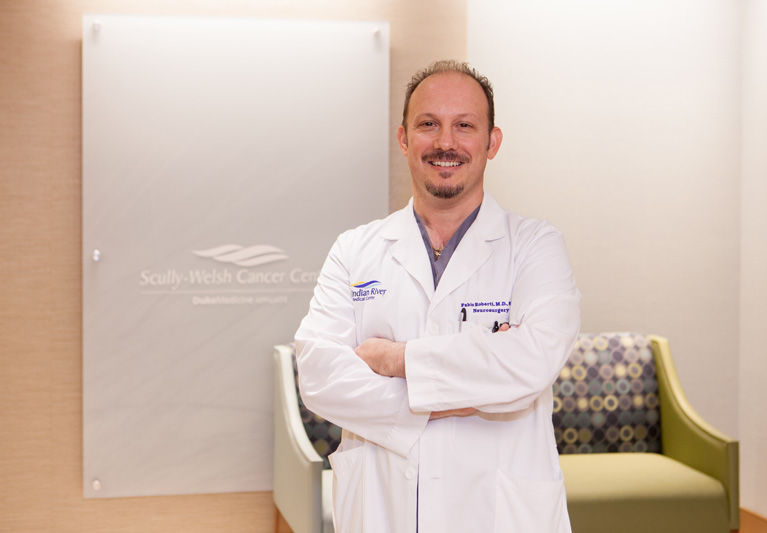
The recent death of Beau Biden, the 46-year-old former Delaware attorney general, father of two and eldest son of Vice President, Joe Biden, briefly brought brain cancer into the national spotlight, but it is not a disease people normally want to think about.
Nevertheless, the National Cancer Institute estimates that 15,320 will die from the disease this year while 22,850 new cases will be diagnosed.
Besides being deadly, the disease is also quite complex. There can be multiple types of both primary and secondary tumors involved, both benign and malignant, and they can all require different types of treatments.
In fact, the Johns Hopkins School of Medicine in Baltimore reports there are more than 120 different types of primary brain tumors – and that doesn’t include all the other forms of cancer that can and do metastasize and spread from the breast or lung or other parts of the body to the brain. Those metastasized secondary cancers are even more common than primary brain cancers, though they tend to be somewhat less lethal.
Dr. Fabio Roberti, medical director of neurosurgery at Indian River Medical Center and a department chair and professor at the prestigious George Washington University Hospital in Washington, D.C. knows just how complicated – and potentially lethal – these various tumors can be, and he is expert at treating brain tumors through a wide variety of methods and techniques including radiotherapy or radiation treatments, chemotherapy and, yes, brain surgery.
That’s a good thing. Forbes Magazine reports that currently only three out of every 10 people diagnosed with brain cancer will survive more than five years. Those diagnosed with a particularly aggressive strain of primary brain cancer known as a grade four Glioblastoma or Gliomas, according to Boston’s Dana-Farber Cancer Institute, will likely survive a mere 14 months past their diagnosis, on average.
Even so-called “benign” tumors can pose substantial risks. Just this past February, the bishop of the Catholic Diocese of Palm Beach, Gerald Barbarito, underwent a seven-hour surgery for the removal of just such a tumor. Roberti states that, on average, brain surgeries he performs last four to five hours, though he does recall one marathon session that lasted some 22 hours and then cheerfully adds that it, “led to a very good outcome.”
In May of this year, the National Brain Tumor Society issued a statement saying, “Patients with brain tumors face not only devastating symptoms and low survival rates, but also a staggering lack of effective treatment options. Brain cancer is among the deadliest of all cancers and has claimed too many lives.”
Roberti agrees that too many lives have been lost but he is clearly more optimistic about the prognosis for the 40 to 50 cases he sees here in Vero Beach each year.
“Improved diagnostic techniques,” says Roberti, are allowing doctors to find brain tumors earlier and that is resulting in what he terms, “much better outcomes.”
“We treat the patient as a whole,” explains Roberti. “One of the mistakes that can be made,” he continues, “is to treat the patient by organs.” In other words, treating a tumor in the brain and then discovering the cancer actually came from the breast or lung won’t solve the underlying problem.
Roberti says that in his practice, “Every therapy is tailored to the (tumor’s) pathology and to the individual patient.”
Often that can mean no surgical intervention at all. The opening of the new Scully-Welsh Cancer Center in Vero and the possibility of new cancer trials there along with use of the hospital’s linear accelerator, (an external beam radiation device that can deliver tightly-targeted, high-energy, cancer-killing x-rays to a patient’s tumor), along with improved chemotherapies are all powerful new tools in the battle against brain cancer according to Roberti.
That said, the director of neurosurgery explains, “The craniotomy is still one of the most common procedures used,” in battling brain cancer. According to Johns Hopkins, “A craniotomy is the surgical removal of part of the bone from the skull to expose the brain. Specialized tools are used to remove the section of bone called the bone flap. The bone flap is temporarily removed, then replaced after the brain surgery has been performed.”
This is necessary in some cancers such as Gliomas because those tumors have finger or claw-like tentacles that can reach into and around the brain and are next to impossible to remove any other way. After surgery, neurosurgeons like Roberti then reconnect the bone to the skull using titanium mini-plates and screws. And, “No,” Roberti says with a smile, “they don’t set off metal detectors.”
The biggest risks in brain cancer surgery, explains Robert, “are infection, seizure, stroke and bleeding, [but] with new techniques and proper training those complications can be kept to a minimum and that’s what happens most of the time.”
As to what may be coming down the brain cancer pipeline in the near future, Roberti seems particularly enthusiastic about some new research currently being conducted in which pieces of a tumor are removed, collected and then synthesized into a vaccine for that specific tumor. Since each tumor has its own unique genetic code, according to Robert, this could be a big step forward in preventing the recurrence of that cancer.
Since no one knows exactly what causes the many various types of brain cancer, Roberti emphasizes “symptom awareness.” The earlier a problem is detected, the better the odds are for long term survival. So, if signs of progressive neurological deficits, headaches, seizures or difficulty speaking should start to appear it would be wise to contact a primary care physician or a neurologist like Roberti.
Dr. Fabio Roberti is at 1040 37th Place, Suite 201 in Vero Beach. The phone is 772-563-4741.



